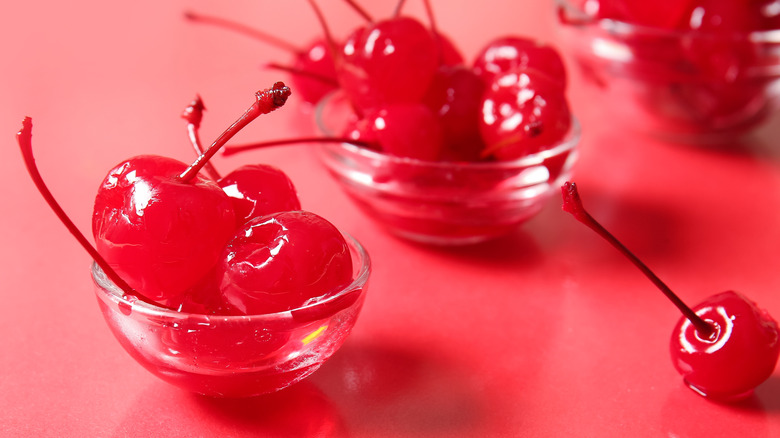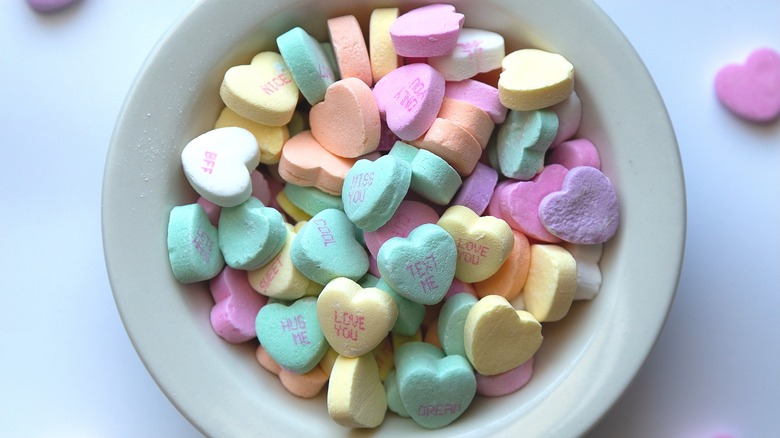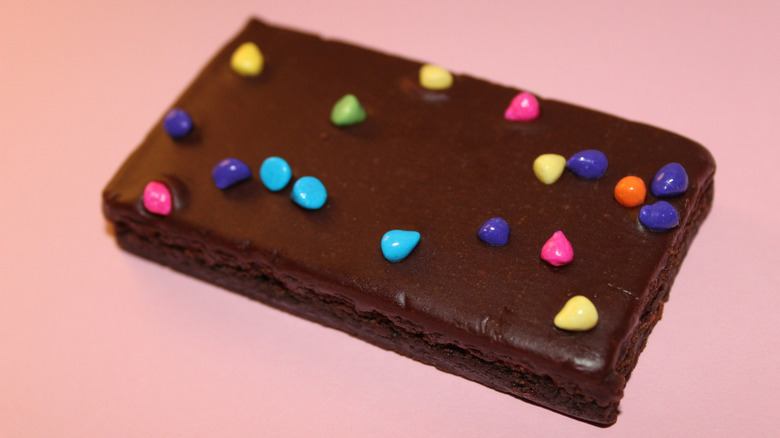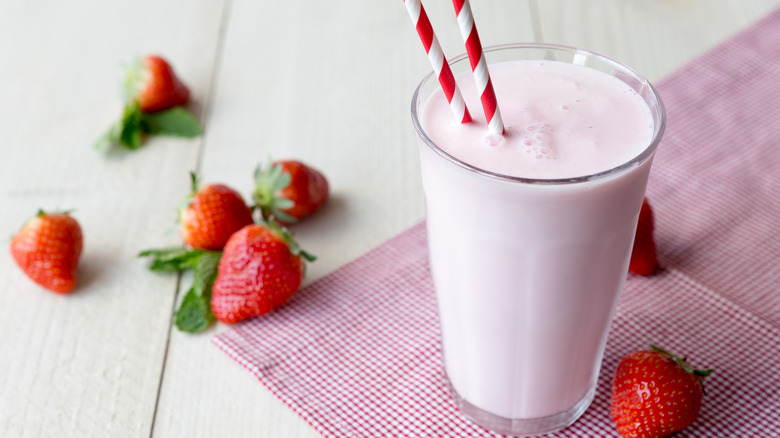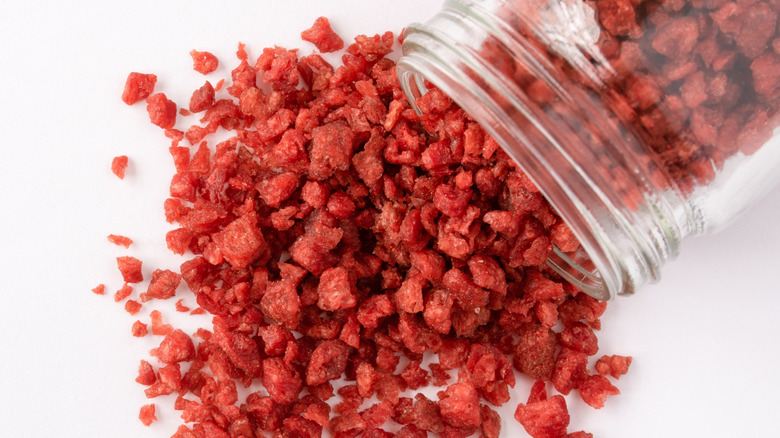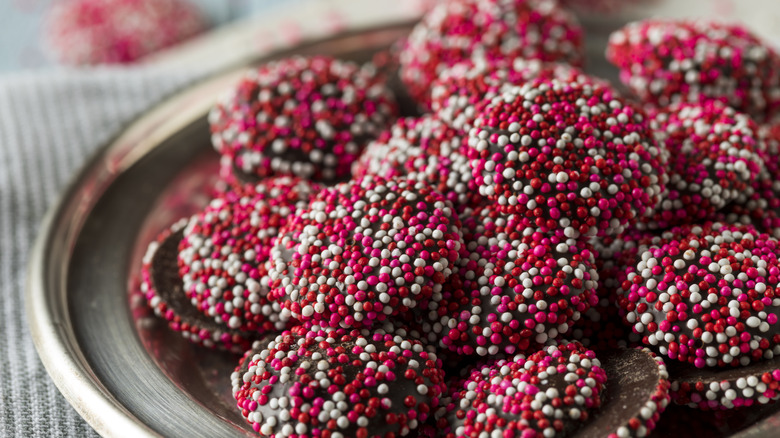5 Types Of Food That The Red Dye No 3 Ban Is Going To Impact
For nearly a century, artificial red food coloring has been an integral part of candies, baked goods, and beverages, providing their signature pink and crimson hues. On January 15, 2025, the U.S. Food and Drug Administration (FDA) announced a historic ban on FD&C Red Dye No. 3, also known as erythrosine. This synthetic pigment has long been controversial due to studies linking it to health risks, including cancer in laboratory animals. (Oddly enough, the use of Red 3 is cosmetics has been banned since 1990 for the same reasons.) Food manufacturers will need to remove the dye from their products by January 15, 2027. This regulatory shift reflects increasing concerns over artificial additives and their impact on health, particularly in widely consumed treats ranging from childhood staples to seasonal delights.
This moment marks a major milestone in food safety regulation, with implications extending beyond the color of foods. As brands reformulate their recipes, the absence of this vibrant dye may transform how we perceive and experience many products we love.
Candies
Candy has always been a feast for the senses, and Red Dye No. 3 has quietly played a starring role in some of the most iconic confections to grace store shelves. From the flirty pinks of Brach's Conversation Hearts, the quintessential Valentine's Day staple, to the warm orange middle layer of candy corn (a candy so many people hate due to its waxy texture and cloying profile), this dye has enhanced countless brands' bestsellers. Even the fruity hues of Wiley Wallaby watermelon licorice and the cheerful tones of PEZ candies owe part of their charm to this synthetic coloring.
While the flavors of these candies will remain unchanged, the departure of Red Dye No. 3 signals a shift that could reshape the emotional connection many have to these classics. Candy manufacturers now have the opportunity to turn to natural red alternatives, including beet juice, pomegranate juice, radish extract, and carmine (made of crushed cochineal insects). However, finding the right balance between natural solutions and the eye-catching magic that makes these sweets so appealing is no small task. The challenge lies in preserving the visual vigor without compromising the essence of these time-honored treats.
Snacks
Prepackaged snacks are another category set to undergo noticeable changes. Little Debbie Cosmic Brownies, celebrated for their dense, fudgy base topped with multicolored, candy-coated sprinkles, will need to find new ways to maintain their playful aesthetic. Similarly, Entenmann's Little Bites Party Cake Mini Muffins, beloved for their whimsical bursts of color, will require reformulations to preserve their charm. Even Mother's Circus Animal Cookies, the crispy pink-and-white frosted crackers that have delighted generations since the 1910s, face a new reality without Red Dye No. 3.
These colorful treats have long been staples of birthday parties, school lunches, and coffee breaks. As the snack cake and cookie industries face transitioning away from synthetic dyes, brands must embrace more natural solutions, ushering in a new era for consumers and manufacturers alike. While significant, this change is unlikely to diminish their enduring appeal, as these treats will continue to enchant fans for years to come.
Strawberry beverages
Although many beverages like Cherry Coca-Cola, Dr. Pepper, Mountain Dew Code Red, and Gatorade Fruit Punch will be unaffected by the ban because they contain the still-legal petroleum-based Red Dye 40, few categories will likely feel the impact of Red Dye No. 3's removal as much as strawberry-flavored milks. Strawberry milk has been experiencing various viral moments lately, including the popularity of whipped strawberry milk and the seemingly recent discovery of hwachae, a liquid dessert with Korean origins, made with chunks of fruit, ice, lemon-lime soda, and the pink-tinted dairy darling.
From the nostalgic appeal of Nesquik strawberry milk to the bubblegum hues of Yoo-hoo Strawberry Drink and TruMoo Strawberry Whole Milk, this shade has long been central to the identities of these products. While the mostly artificial flavors of these beverages will remain unchanged, the possible shift to natural colorants like beet juice and anthocyanins derived from fruits presents new challenges. These natural pigments, while healthier, often yield softer and more muted tones. This may feel less visually exciting for many consumers, yet it aligns with the growing demand for cleaner ingredient lists and transparent labeling.
Imitation meat products
Red Dye No. 3 might not be the first thing that comes to mind when you think of plant-based meat, but its role in creating that familiar cooked appearance is significant. Imitation bacon bits such as those from Durkee and Rainy Day Foods rely on the dye to achieve the reddish-brown color that mimics the appearance of crispy bacon. Morning Star Farms Bacon Strips, which feature a marbled looked designed to resemble traditional pork bacon, will also need a rethink. (By the way, we recently ranked these bacon strips at No. 4 on our list of popular fake bacon products.)
The prohibition of Red 3 could affect these highly processed products' outward appeal, especially for consumers seeking realistic meat alternatives. However, this could be an opportunity for vegan and vegetarian brands to innovate with natural colorants or even lean into their plant-based identities by focusing on more neutral or earth-toned visuals. This shift could pave the way for new strategies in the plant-based market, fostering creativity and transparency.
Desserts and sweet ingredients
The impact of the Red Dye No. 3 ban also extends to iconic desserts and sweet ingredients. For example, take maraschino cherries: Their neon red sheen has been an unmistakable hallmark of sundaes, cocktails, and retro baking recipes for decades. Without Red 3, these cherries will likely take on a more subdued appearance. Another treat facing changes is the Good Humor Strawberry Shortcake Bar. Known for its pink crumb coating and strawberry-flavored center, this old-school ice cream truck treat you may have forgotten will require reformulation.
Even sprinkles, the festive glitter on many cakes, cookies, and other baked goods, will not be spared from the ban. Betty Crocker nonpareil sprinkles, a go-to for countless celebrations, will need to alter its formula. Although there is a possibility that some brands will simply switch to other synthetic dyes like Red 40, manufacturers may now face the delicate task of preserving the festive character of these products while transitioning to natural dyes.
This shift marks the end of an era for Red Dye No. 3, but it also represents progress in food safety and innovation. As artificial dyes fade into the background, natural alternatives take center stage, offering healthier, more sustainable options for future generations. The transition may seem bittersweet for those nostalgic for the bright colors of their favorite treats. Still, it paves the way for a new chapter in food manufacturing that prioritizes transparency, health, and creativity.
